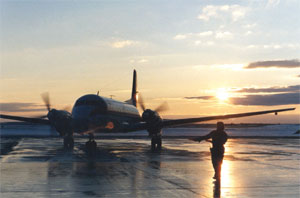
Features
Operations
What’s Next
Battered by costs and buried under red tape, Canada's charter operators wonder what's next.
October 2, 2007 By David Carr
 Measured by growth, 2002 ended much better than many of Canada's
Measured by growth, 2002 ended much better than many of Canada's
charter operators had forecast. But even this sliver of light was not
enough to offset the accumulative effect of uncontrollable costs, new
regulatory requirements and uncertainty surrounding war and the price
of oil. Some operators have chosen to make charter a by-product of a
growing trend toward fractional ownership and corporate aircraft
management. Others have walked away completely.
"There
have been a lot of new rules, regulations and costs coming from
customs, insurance companies and airport authorities without any
analysis on the global impact of adding one to another," says Gilles
Bruneau, president of Montreal based Avionair, an operator specializing
in executive charter and cargo. "We are at a point where you comply
with one requirement and wonder what are they're going to hit you with
next?"
Glenn Priestley, vice president of fixed-wing, air taxi
and flight training for the Air Transport Association of Canada (ATAC)
says the entrepreneurial spirit is being extinguished.
"A lot of the
aviation business in Canada is owner/operator with less than 20
employees. And these are the operators who are getting creamed," he
said.
Creamed by insurance premiums that once averaged 8% of
operating costs, but are now running neck and neck with fuel as a
charter operator’s single largest expense. And, creamed by double digit
increases in landing and terminal fees by airport monopolies.